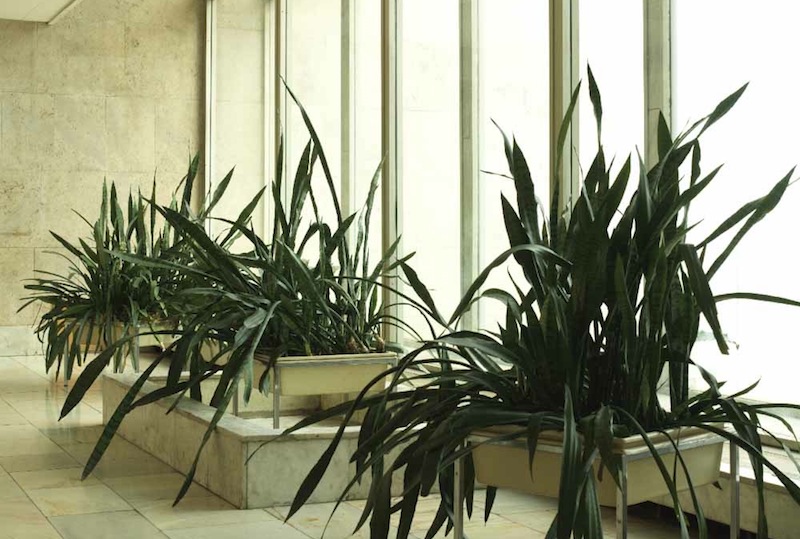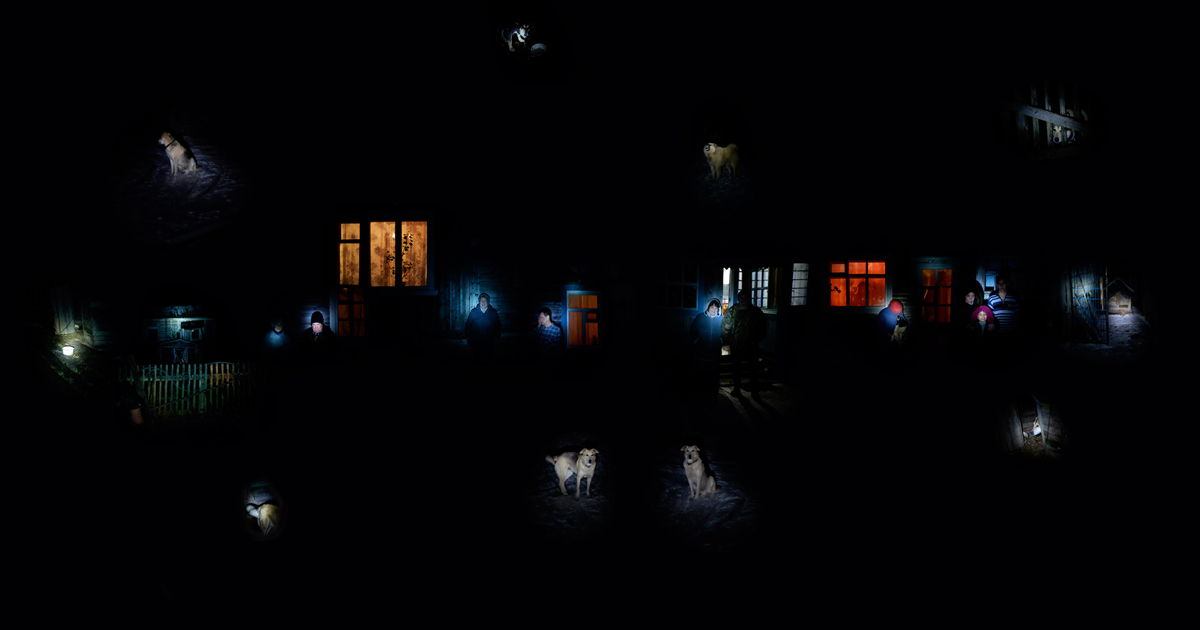Latvian singer Waterflower is serving pure, plant-based pop
Latvia-based singer and performer Waterflower has always had an affinity with experimentation. Whether she is walking onto stage accompanied by her pedalboard and wreaths of blooms, or draped in ultramarine layers and magenta flowers in her music videos, her style is an ethereal, neon-hued embrace of the senses. Once on stage, she unleashes a mixture of 90s dance tracks, avantgarde pop, techno, and electronica.
But Waterflower’s joyful exploration goes beyond aesthetics. She is also disrupting what it means to make music — most notably by using plants as musical instruments. “It’s like giving the plants a voice,” says Waterflower, also known as Sabine Moore, “I’ve gotten to know plants quite well.”
Moore began using synthesisers to extract sound from her unique instruments of choice in 2015. “I’ve always been really computer savvy ever since I was tiny,” she says. “It was like a plaything to me.” As one of the first female solo producers and sound engineers in Latvia, Waterflower thrives in a space where everything she does is “weirdly unique”. That includes rejecting an anthropocentric approach to music, embracing nature as an active band member instead of simply a backdrop. “The plants don’t like traveling, they get really chaotic if they change location too much. So I never, for example, travel with plants; I always ask for local plants,” says Moore. “And if anything touches either flowers or young leaves, they have a certain high-pitched tone of voice. If you light a candle in the room with a plant without doing anything, the plant would just become very loud.”
The otherworldly soundscapes on her eco-futuristic single, “Sniegpulkstenītes” (“Snowdrops”), use a MIDI sprout, a device that measures biometric data in plants and converts it into audio with the help of a computer. The result is a raw forest adventure about “nature waking up”, where Moore runs and crouches beside her leafy friends.
Another track, her single “Palm vs Palm”, sees Moore attach contact microphones to towering palm trees, sporadically playing them like piano keys. Moore and her ultraviolet locks sway in the centre of the frame, a restless creativity beating in the heart of a technicolour wonderland.
Waterflower in her video for “Love”.
Moore owes part of her ease of movement between different styles and genres to a cross-cultural upbringing. Her mother is Latvian; her stepdad Australian, and she grew up both in the UK and Latvia, becoming bilingual early on. “I am kind of between cultures all the time,” she says. “Everything that I’ve experienced, I try to put it in Waterflower in an intuitive kind of way, and then work out what it means after”.
Her songs are also infused with a pure nostalgic joy, something she attributes to listening to Dance to the Max CD’s with her step-dad. Most recently, Moore has been entranced by euro-pop, which she describes as “halfway between cringe and halfway between the best thing ever because people are really trying hard”. You can truly feel this love radiate from Moore as she bops around with her woodland plants on stage or jumps to her cosmic beats in music videos.
Yet while Moore’s childhood was filled with techno trances and dancing, she also felt heavily stifled. She particularly felt confined by the trope of womanhood embodied and passed down by her mother: “I was in this juxtaposition of you have to be silent, beautiful, and feminine; don’t say what you actually think. Then there was this other world, [where I could] just be creative, just come up with random stuff and see what happens, and those two things are constantly part of Waterflower.”
Her most recent single, “Zem Ūdens” (“Underwater”), is about coming up for air, “being trapped in some situation for so long, being trapped in femininity”. But instead of rejecting femininity altogether, Moore gains agency over it, “defying her [mother] by singing”. In the video, Waterflower subverts the paintings she studied as a classical art student by diving into the water through an ornate mirror, turquoise drapery falling at her feet. “At that point [in art school], I was very silenced in my life, I really identified with these paintings, maybe I just keep trying it on to remind myself that I don’t feel like that anymore.” Splashes from a phone being dipped underwater and sonorous vocal melodies create aquatic soundscapes in a video where Moore’s emboldened presence is clear.
In her bid to break free from boundaries, Waterflower elasticises concepts that are kept often static, such as gender and identity. Her song “Find it!”, a multicolour synth maze of pressing, poetic lyrics, welcomes LGBTQ+ identity — a rallying cry against a recent Latvian bill defining a family unit as strictly a “union between a man and a woman”.
Moore also plays with gender in her music videos and performances, including as part of the Latvian Drag King Collective, where she was crowned Drag King 2021. She is able to find harmony between genders through her drag king persona. “I really needed to explore this other masculine side in order to understand Waterflower better.” Amidst the ‘hidden sexism’ within the music industry, where “queer” or a “feminist” are often seen as dirty words, the community of drag kings lets Moore be completely herself. “They’re able to see through some of the bullshit that goes on because it’s so many layers of conditioning.”
Moore isn’t stopping at plants and water. Her latest venture is her most experimental yet: making music with mushrooms. “I want a song that I can really dance to,” she says. “It’s probably going to be titled “Mycelium (Step By Step)”.
Moore’s affinity with mushrooms comes from a long foraging tradition in Latvia, where hearty homemade meals are made with mushrooms picked from the forest. An Instagram teaser for “Mycelium (Step By Step)” already shows Moore darting around in bright orange, attaching electrode clips to forest mushrooms.
But “Mycelium” — the name given to a network of delicate yet hardy fungal threads — hints at something more. This choice of word represents Moore’s drive to show how both nature and technology are intertwined, both bringing people together and connecting them globally. They have “similar values, similar networks”, Moore says.
Moore is entranced by that connection, be that digital or ecological. She is excited most of all that as Waterflower grows, so does the support behind the project. “It’s not just one person’s vision,” she says. “It’s like a collective comes together.” With her luminous sense of innovation, Moore is collecting all her fellow waterflowers to daydream alongside her.
.jpg)



